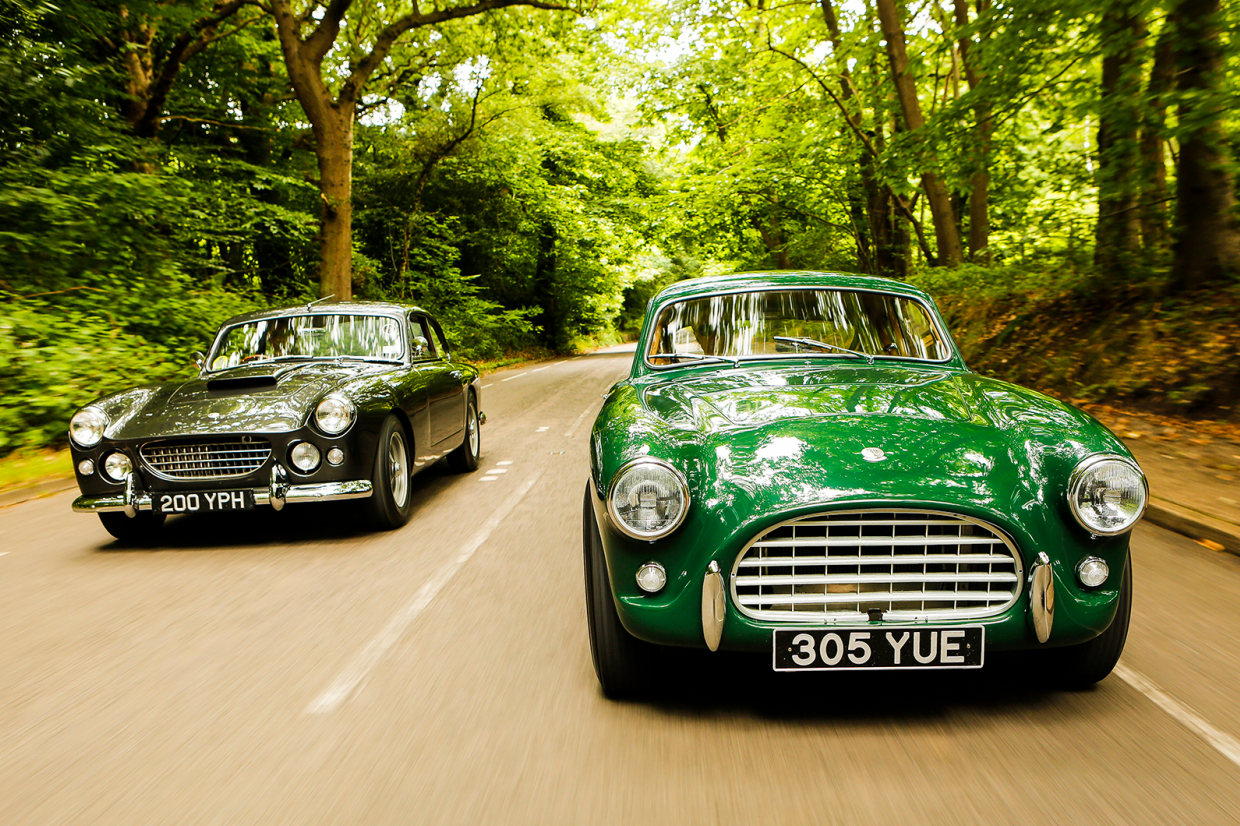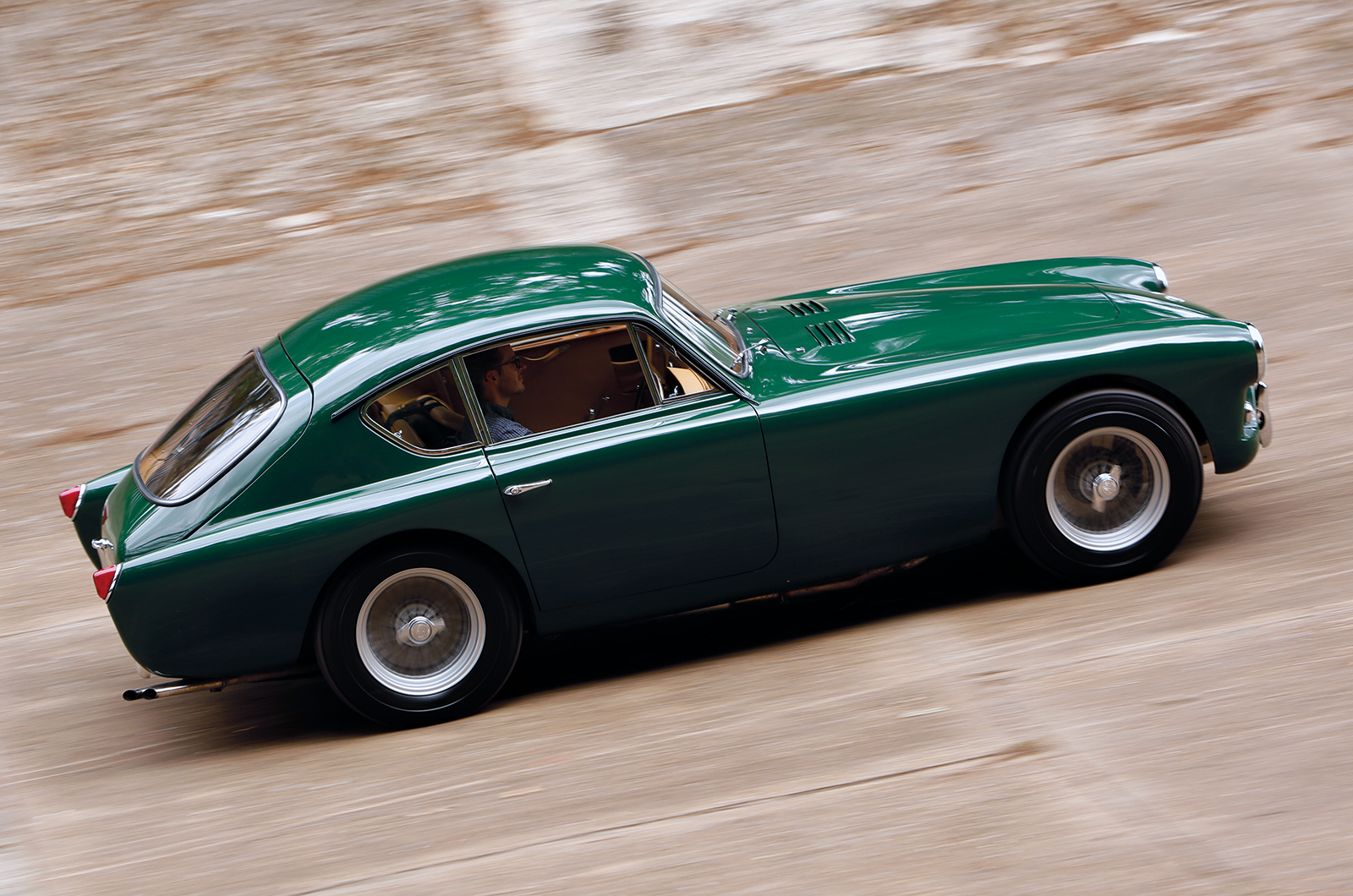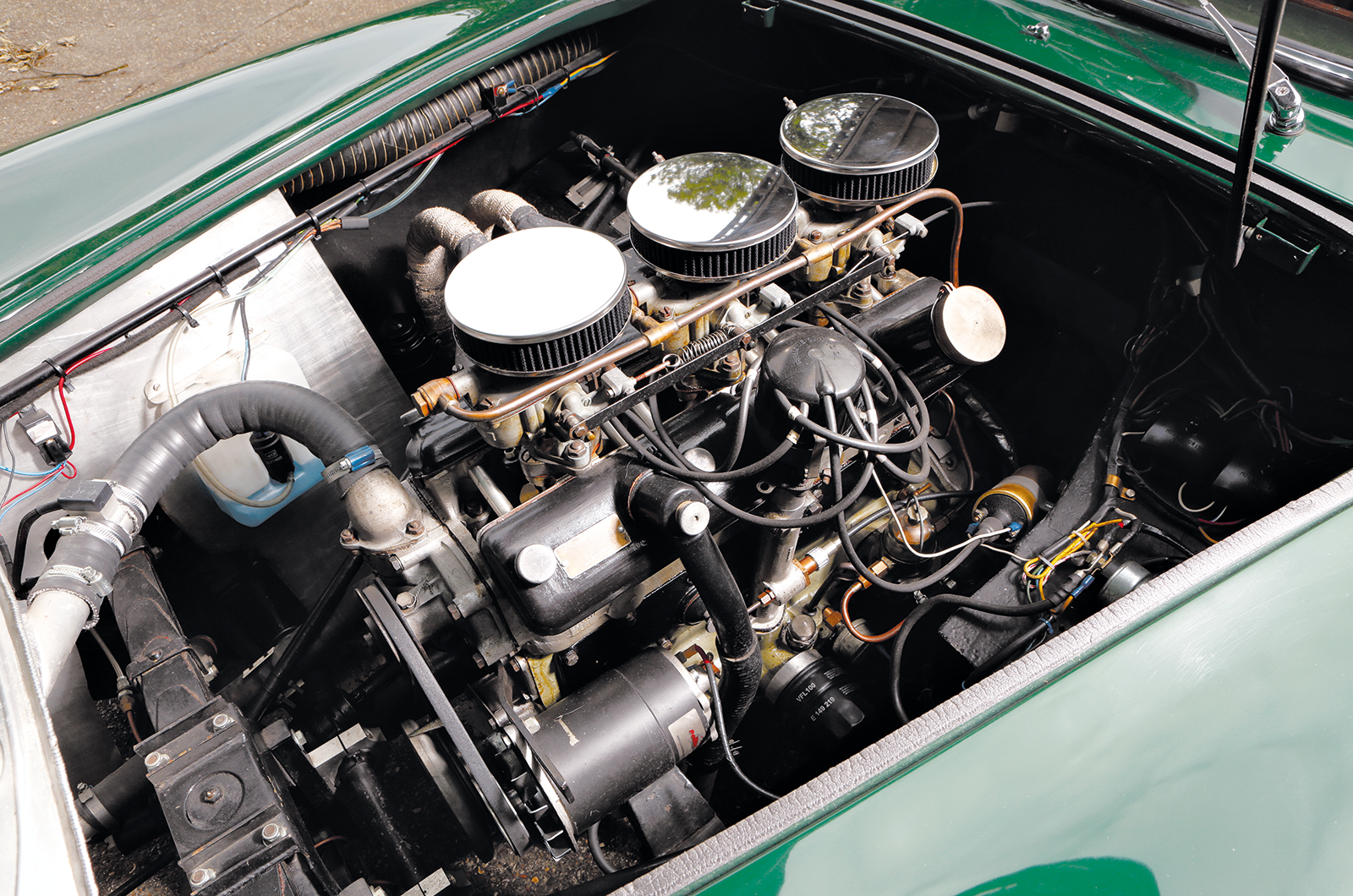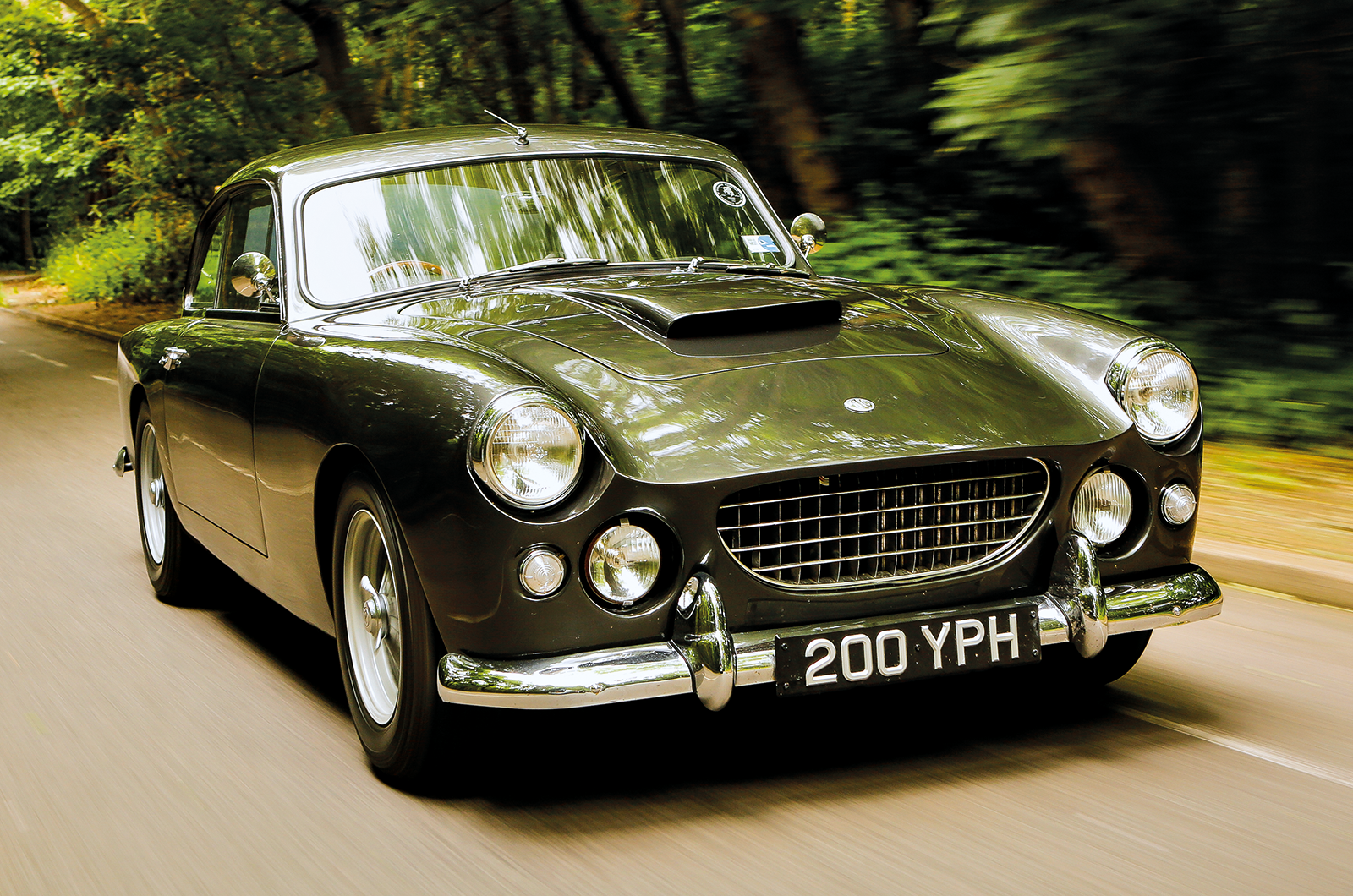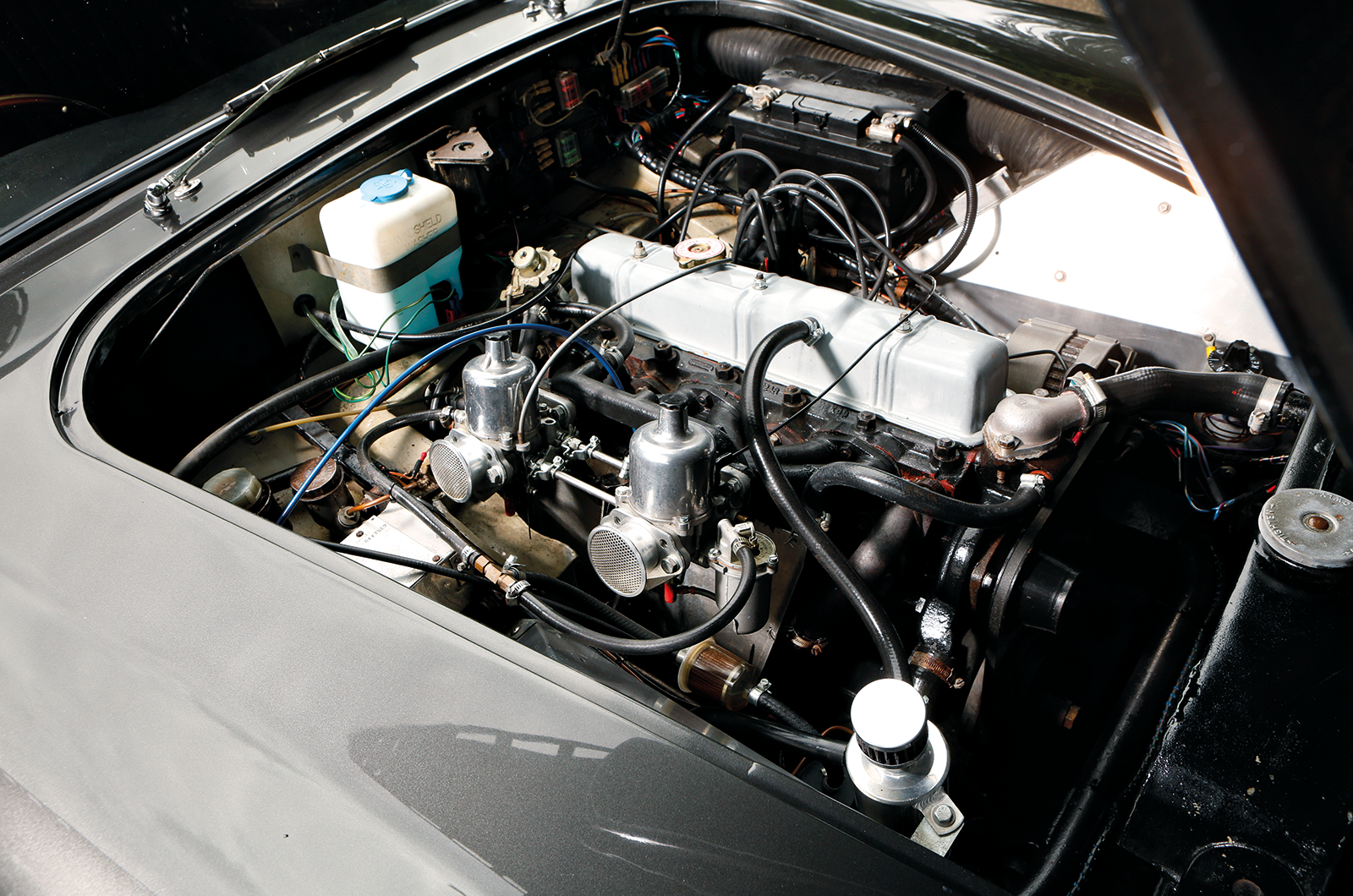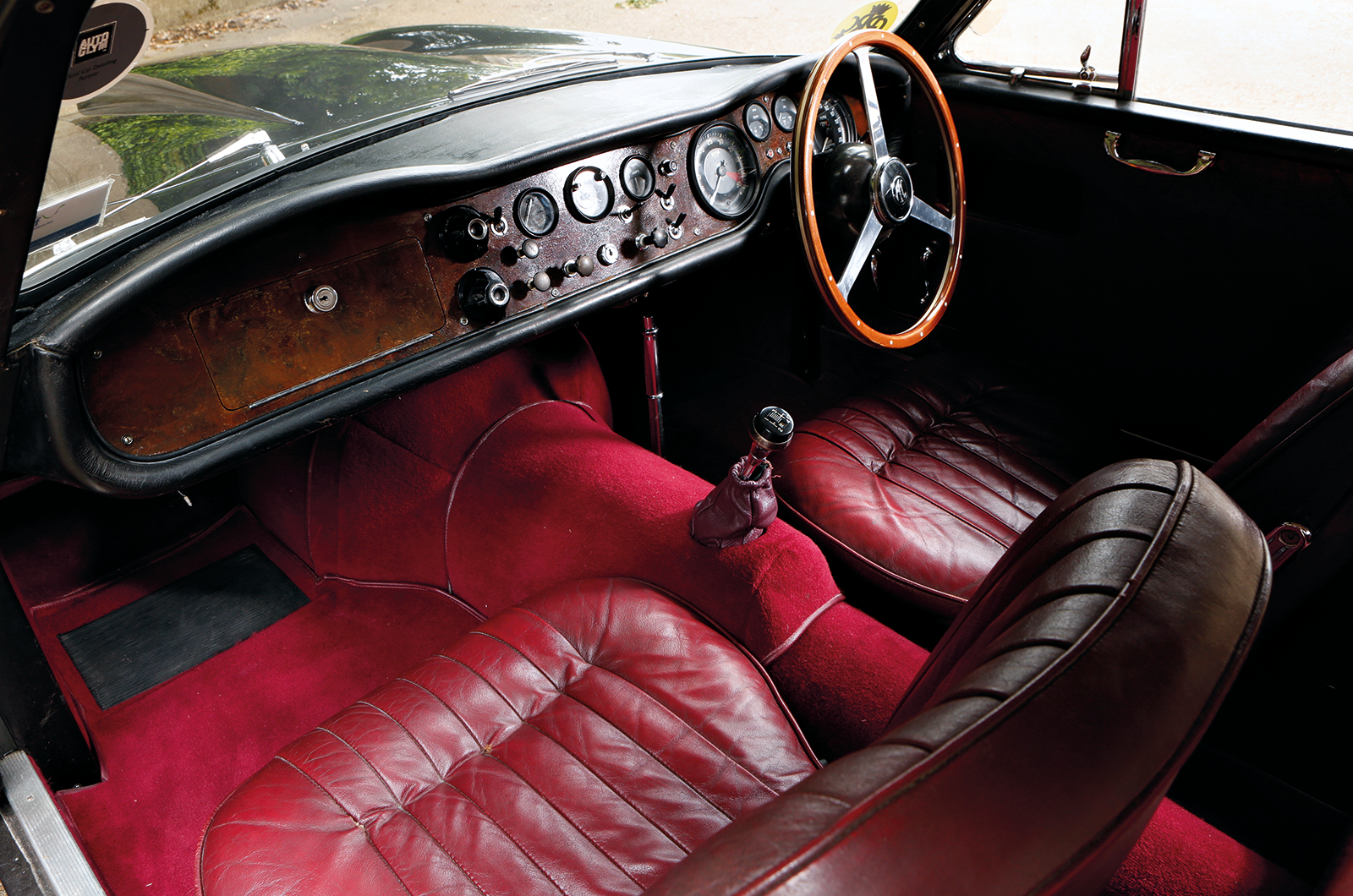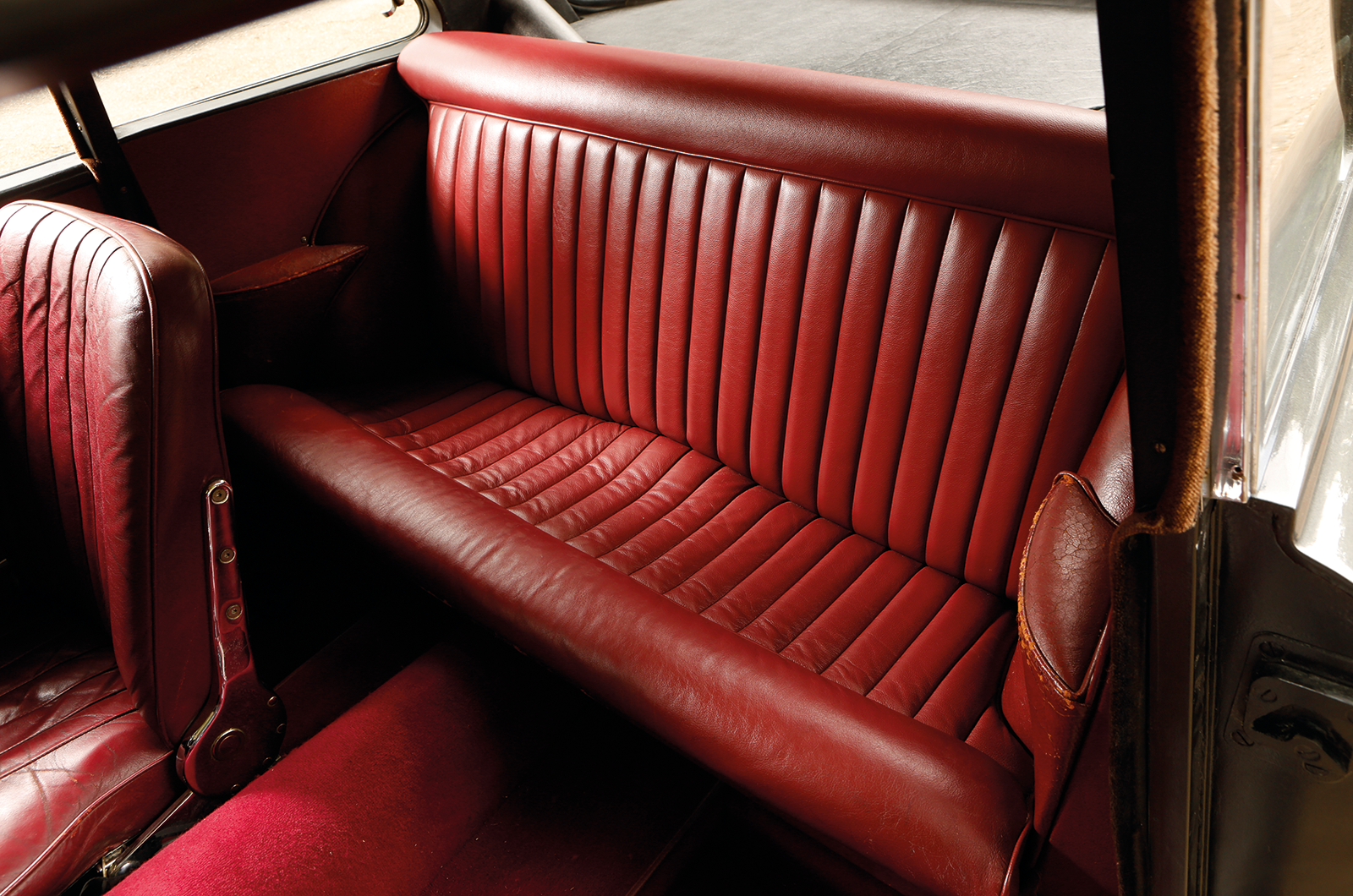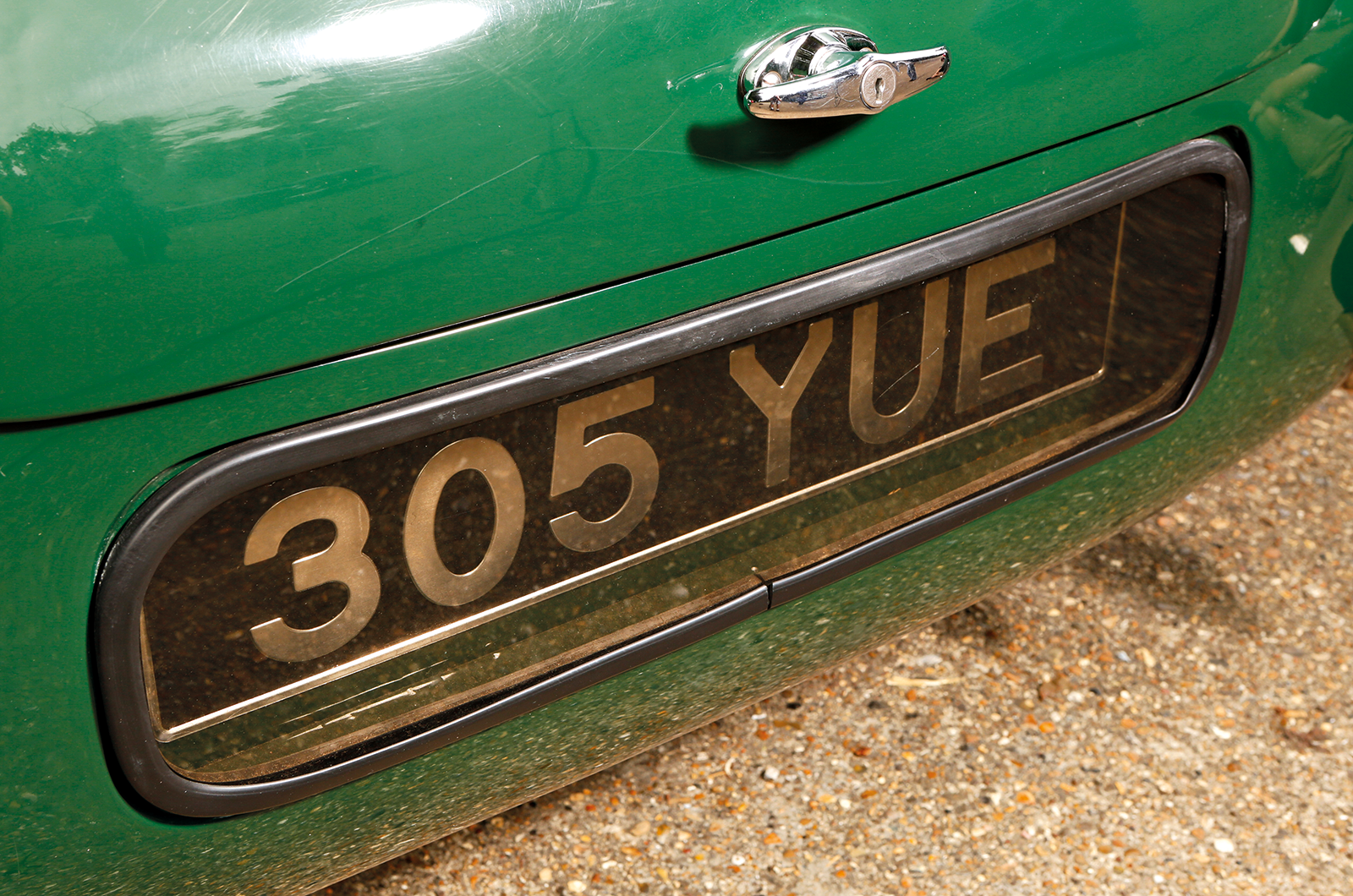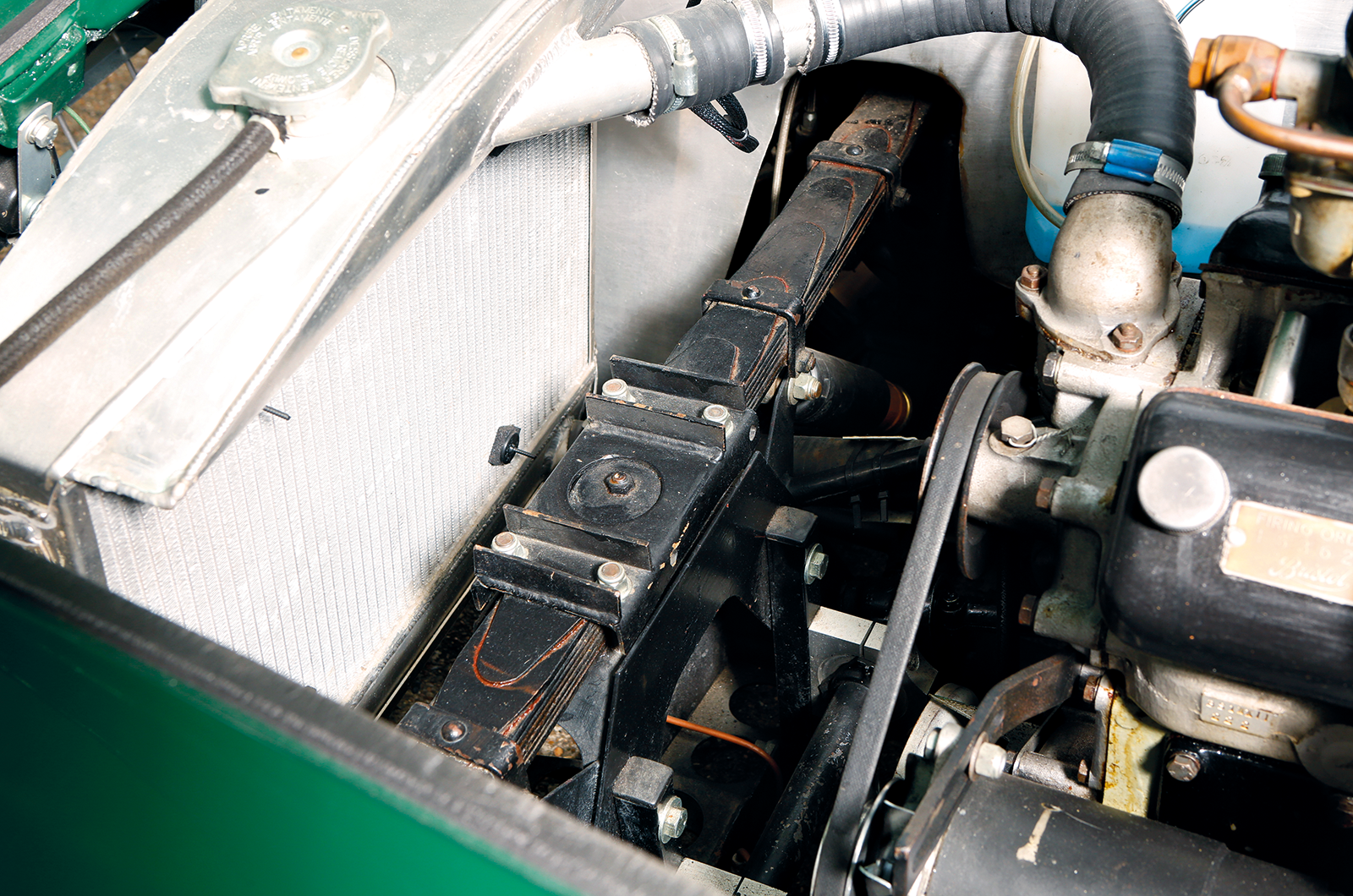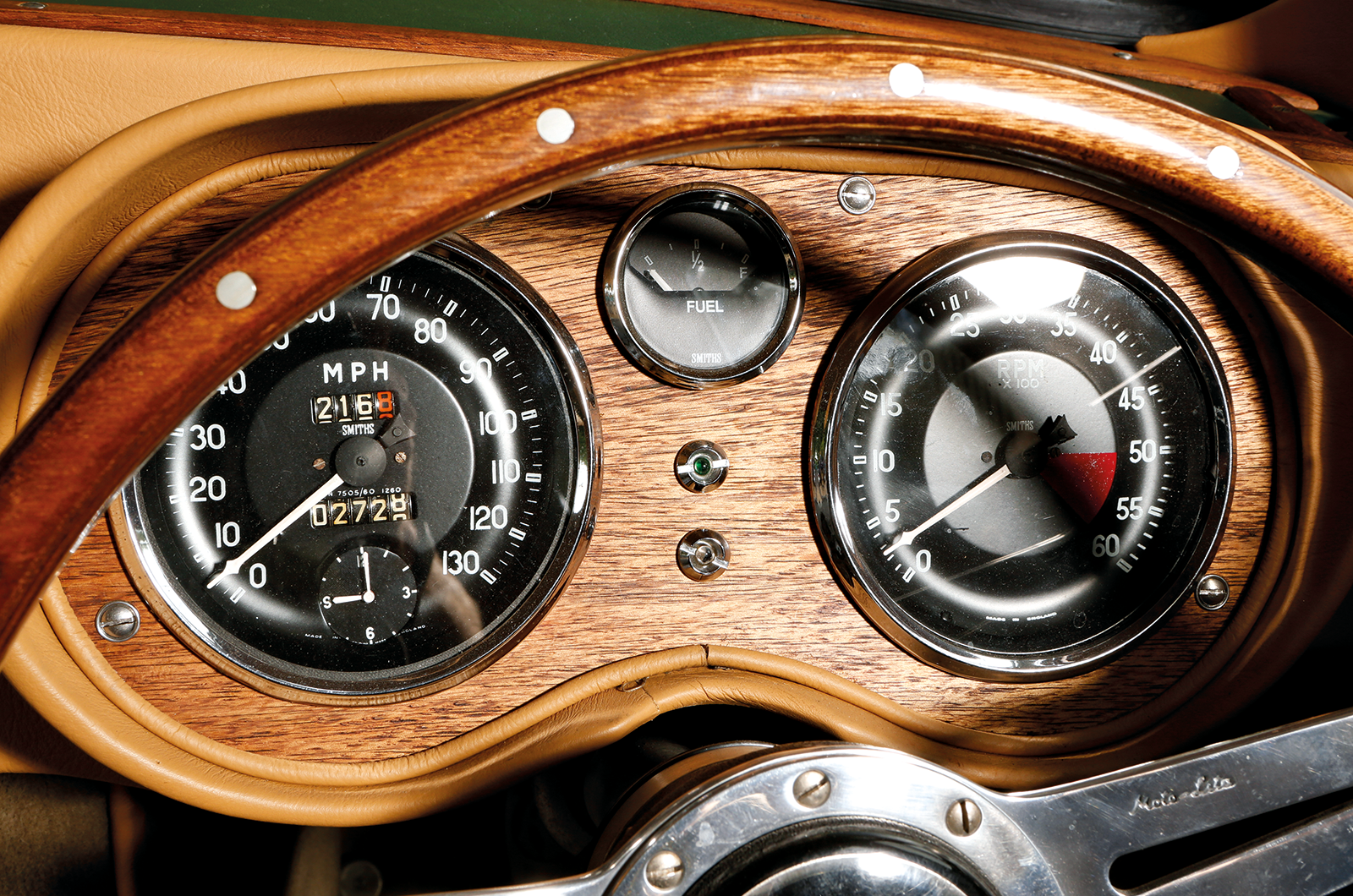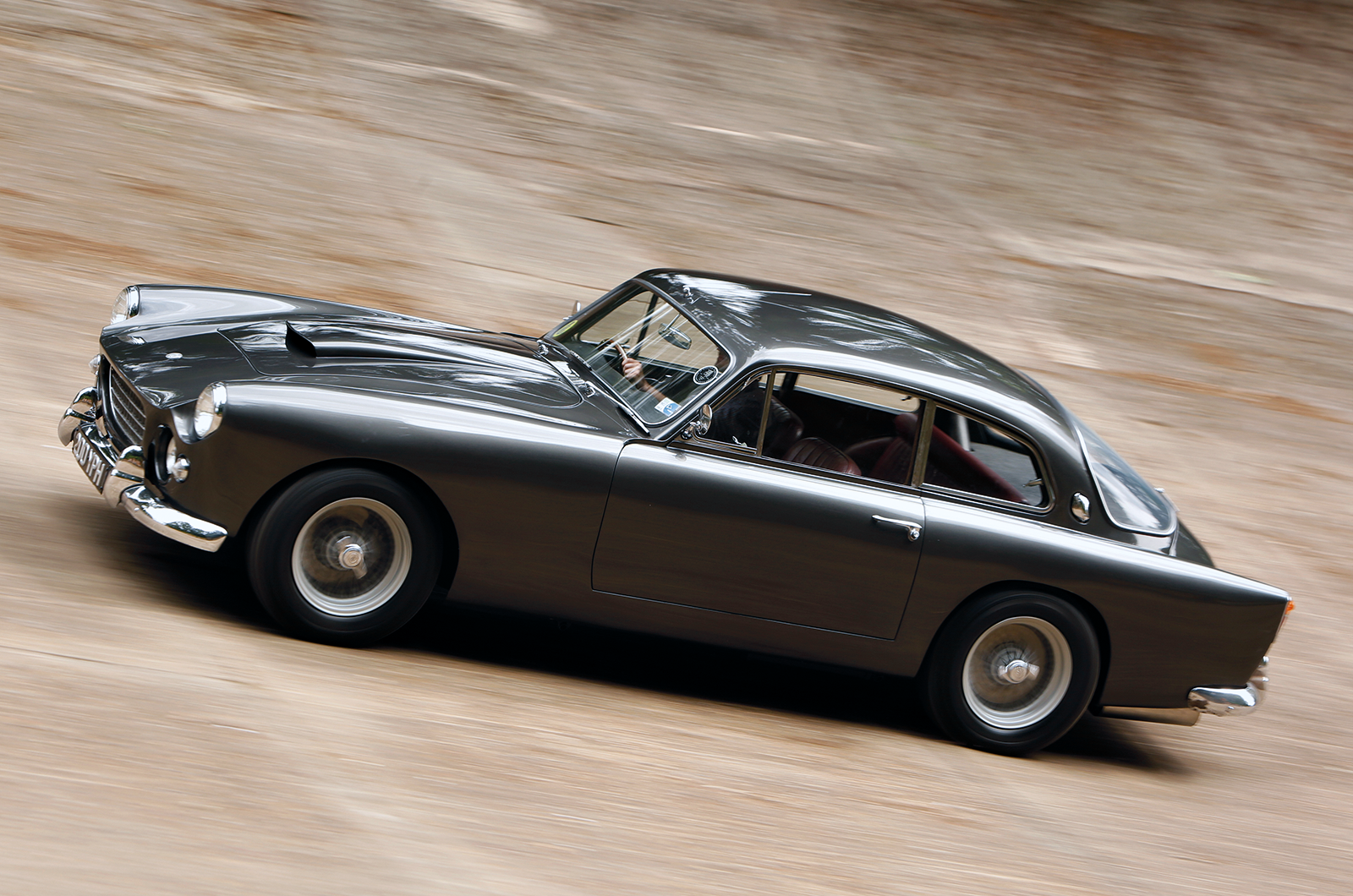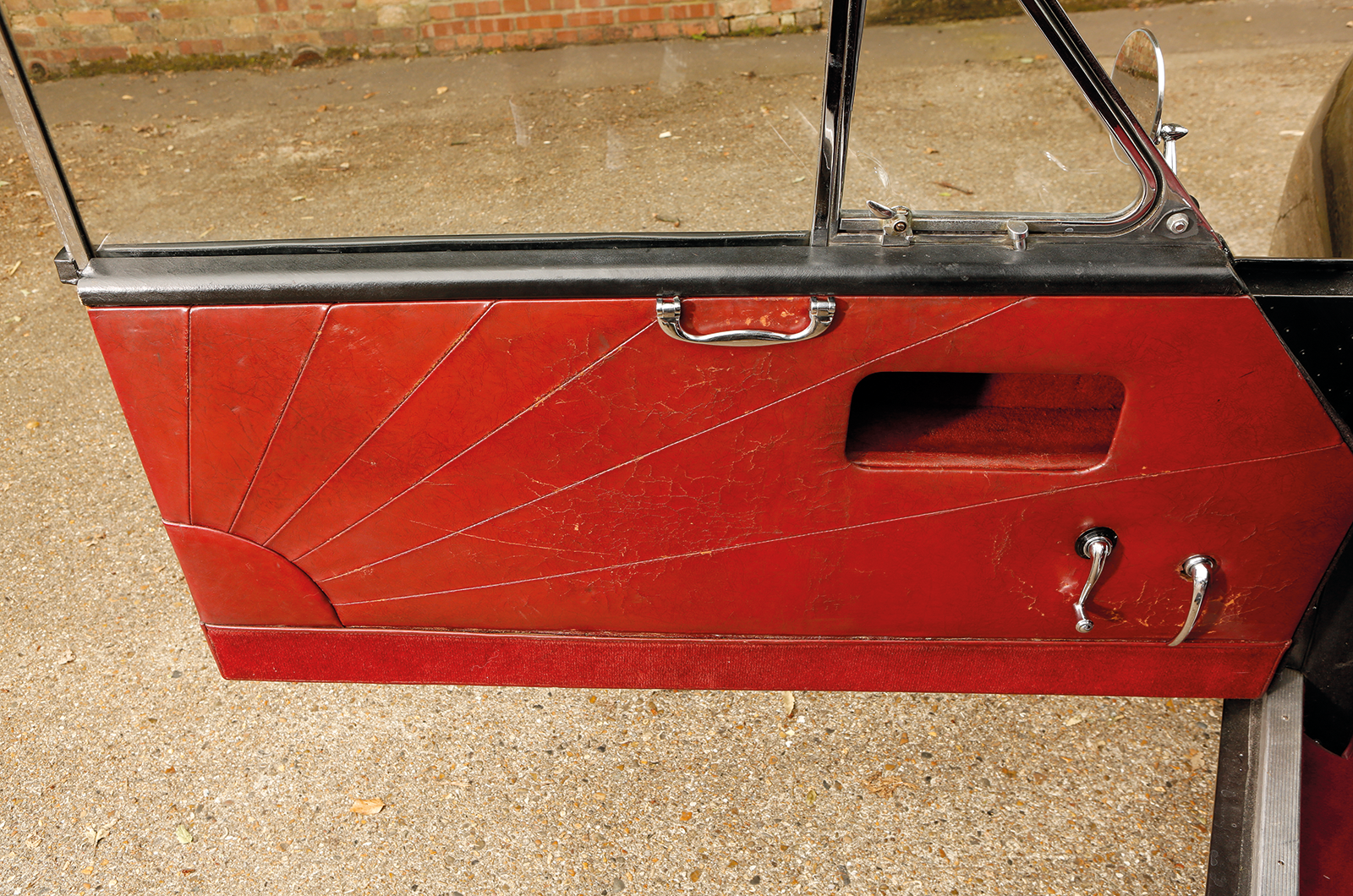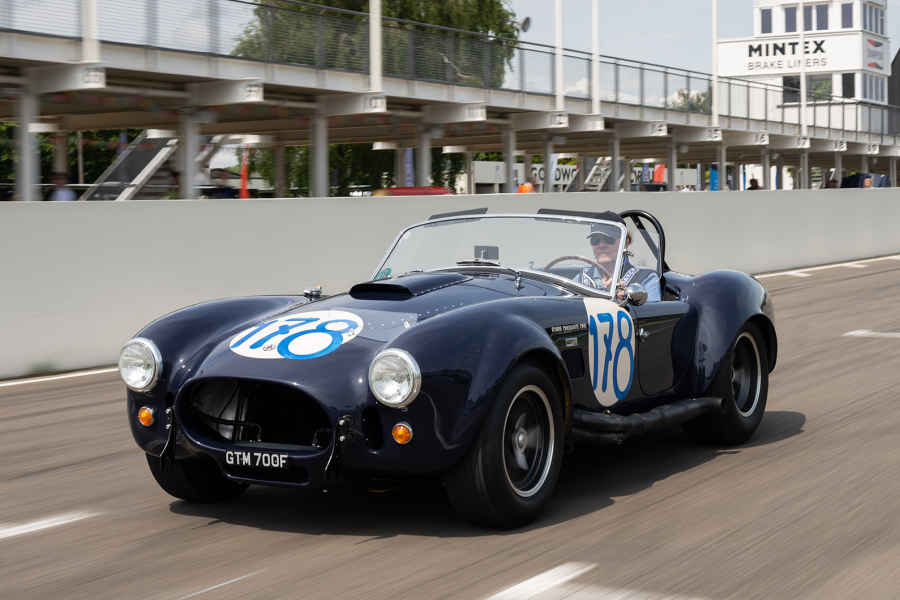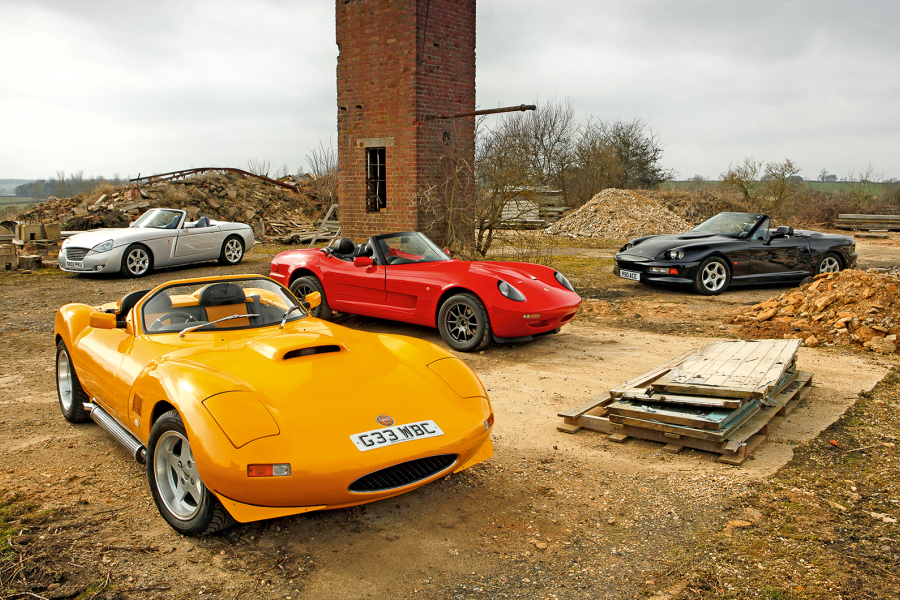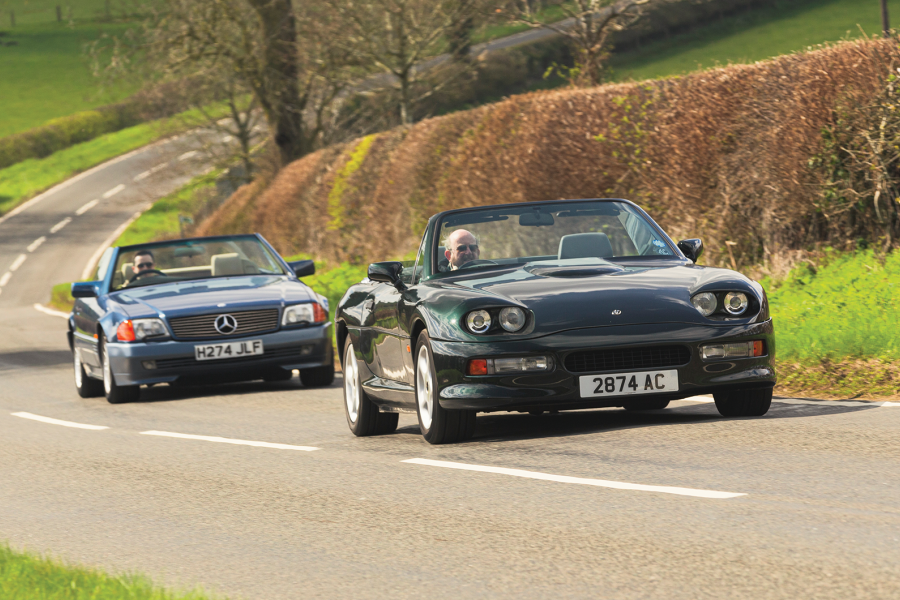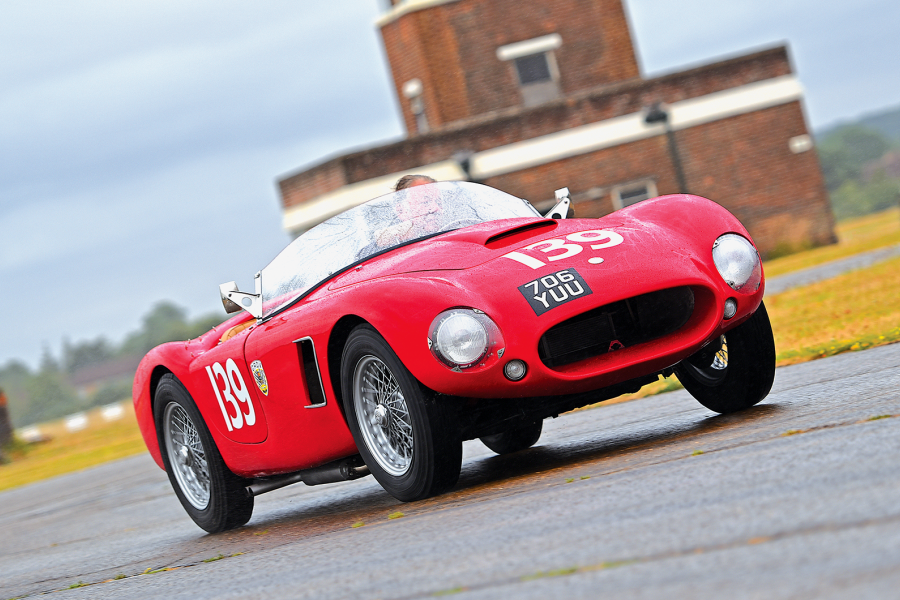“So, in many people’s eyes, it was a four-seater with cramped rear seats, rather than the original conception of a 2+2 with generous seating for children. It fell between two stools.”
Inside the AC Aceca, a simple binnacle houses all the major instruments
The Aceca boasts a much more ordered dashboard.
Although the steering wheel is similarly vertical in both cars, the driving position does feel a little more dated in the earlier model, with that wheel resting in your lap and a gearlever that is bent through various angles on its way out of the transmission tunnel.
Even so, with its mixture of leather and wood, it’s a very pleasing cockpit in which you feel nicely cocooned.
Beneath the metal, the Greyhound received various mechanical upgrades over the Aceca.
Whereas the earlier car had a transverse leaf spring at either end plus cam-and-peg steering, the four-seater revelled in wishbones all round with coil springs and telescopic dampers. There was a new rack-and-pinion system, too.
That translates into sharper reactions than the Aceca, especially around the straight-ahead, with the Greyhound turning in well and changing direction keenly.
‘The AC Greyhound is a very different proposition to the curvaceous Aceca’
The Triumph engine in Warlop’s car has impressive low-down torque, too.
It responds instantly and suits the car well, even if the engine note is more gruff than the crisp, cultured bark that the Bristol unit produces once you start pressing on.
This Aceca’s ‘six’ has been upgraded to an ex-Arnolt Bristol powerplant, and once you’ve explored the lengthy throttle travel the acceleration is impressive and thoroughly addictive.
The rev counter is redlined at 5500rpm, but in truth you don’t need to venture far beyond 4000rpm to make swift progress.
The gearchange, too, is wonderful, a mechanical and precise movement that the slightly woolly Triumph shift in Warlop’s Greyhound can’t match.
The speed – from a standstill, 60mph comes up in about 10 secs – ‘feel’ and spine-tingling noise, which reverberates around the compact cabin, add up to make driving a really good Aceca an unforgettable and intoxicating experience.
This AC Greyhound’s interior trim is all original, including these sunburst doorcards
Despite its attempts to be a more refined option than the Ace, it is still first and foremost a sports car.
Yet, despite what some reports over the years would have you believe, the Greyhound is by no means overshadowed.
It’s less overtly sporting than the two-seater, but it had an even more luxurious and practical brief to fulfil.
It handles precisely, stops well with its combination of discs up front (an option on the Aceca from 1957) and drums at the rear and, on 185HR15 radials, feels nicely composed.
“Towards the end of its development,” said Turner, “a car was road-tested by The Motor, much against my will because I didn’t think it had the right wheels or tyres.
“In the road test it was reported that it had a tendency to wander at speed, which we believed was caused by the 15in wheels and crossply tyres that were fitted.
“I think the car was spoiled for many by that article.”
The AC Greyhound’s Aston Martin-esque rear has elements of the compact Aceca
Mud sticks, and then there was its cost. As Goose points out, for the asking price of £3185 – an Aceca Bristol was £2561 – you could have bought a Jaguar plus a couple of Minis.
Its low profile counted against it, too. In later years, when most people thought of AC they pictured a Cobra or an Ace. If they thought of a closed AC, it was an Aceca.
It’s a shame that Greyhound production stopped when it did, and the car didn’t have the chance to compete for longer with rivals from the likes of Aston, Jensen and Alvis.
It’s fascinating to contemplate it being fitted with a lightweight V8 and possibly forming the basis for the next generation of ACs, but the 2+2 deserves its place alongside the illustrious Aceca.
“I have no intention of selling it,” concludes Warlop. “Once you have a car like this, there’s no need to buy another one.”
Images: Tony Baker
Thanks to: Brooklands Motor Company Group; Brooklands Museum; AC Owners’ Club
This was first in our September 2016 magazine; all information was correct at the date of original publication
Enjoy more of the world’s best classic car content every month when you subscribe to C&SC – get our latest deals here
READ MORE
AC 428: a Cobra for the jet set
Life imitates art: AC Aceca vs Aston Martin DB MkIII
Six of the best: AC Greyhound vs Bristol 406 Zagato
The greatest ’50s sports cars: XK120 vs MGA, AC Ace, Healey 100 & TR3A
James Page
James Page is a regular contributor to – and former Editor of – Classic & Sports Car
